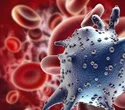Researchers Explore Two-Dimensional Materials for Clean Hydrogen Production
How can we generate hydrogen without relying on fossil fuels or other non-renewable energy sources? One promising method is photoelectrochemistry, often described as artificial photosynthesis. Like natural photosynthesis, this approach uses sunlight and water to produce hydrogen—similar to electrolysis but without harmful emissions.
The Trento-based research team focused on this technique, specifically exploring the use of photocatalysts—semiconductor materials that facilitate chemical reactions under light exposure.
Their study highlights a breakthrough: graphitic carbon nitride (g-C3N4), a lightweight and sustainable material, proves highly effective in breaking water molecules apart to release hydrogen. The researchers found that when g-C3N4 is structured as a single atomic layer, it performs significantly better than thicker or less orderly configurations previously tested. These findings could help lead the way to more efficient hydrogen production using these advanced materials.
Why This Research Matters
Hydrogen is widely considered a key component of the energy transition, offering a cleaner alternative to fossil fuels. However, most hydrogen today is produced through steam reforming, a process that involves heating methane at high temperatures—far from an ideal solution in terms of sustainability. The Trento research team, instead, is exploring hydrogen production through photoelectrochemical cells, a method that eliminates the need for hydrocarbons and reduces environmental impact.
Francesca Martini adds, “By studying the formation and propagation of excitons (a bound electron-hole pair), particles produced by sunlight in carbon nitride formed by a single layer of atoms, we realized that they have a very low speed and move in the photocatalyst thanks to a combined motion that includes the vibrations of the atoms.”
The researchers were surprised by this result. Typically, electrons—being more than two thousand times smaller than the atoms in the photocatalyst—move significantly faster, much like a swarm of insects darting around a person.
However, in carbon nitride, this isn’t the case. Instead, the electrons seem to move in sync with the atomic vibrations, almost as if the swarm of insects and the person decided to walk arm in arm, advancing together until they encounter a hydrogen ion.
The researchers plan to continue their work by running numerical simulations on a database of over 5000 materials. This computational screening will help them identify more efficient catalysts for hydrogen production, potentially improving upon the current options.
This project marks an important step toward energy sustainability and reinforces UniTrento's position as a leading center for renewable energy research.
The work is part of H2@Tn, a research initiative launched by UniTrento over a year ago with support from the Province of Trento. The project focuses on renewable energy and green hydrogen production, in collaboration with Fondazione Bruno Kessler and with funding from the European Union’s Next Generation EU program.
#ResearchChemistry, #ChemicalInnovation, #Science, #ScienceResearch, #ScientificResearch, #ResearchAndDevelopment, #ChemistryEducation, #ChemistryExperiments, #ChemistryLab, #ChemistryStudents, #ChemistryStudy, #OrganicChemistry, #InorganicChemistry, #PhysicalChemistry, #AnalyticalChemistry, #Biochemistry, #MaterialsChemistry, #TheoreticalChemistry, #AppliedChemistry, #MedicinalChemistry
Visit Our Website : researchchemistry.org
Nomination Link : researchchemistry.org/award-nomination/
Registration Link : researchchemistry.org/award-registration/
Member Link : researchchemistry.org/member-submission/
Contact Us: contact@researchchemistry.org
Social Media Links
Instagram : www.instagram.com/chemistryaward
Twitter : x.com/Chemistryaward
Pinterest : in.pinterest.com/chemistrymails




Comments
Post a Comment